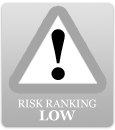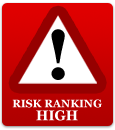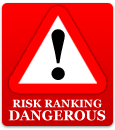Risk ranking
Risk ranking

As part of our ongoing efforts to highlight the risks that people might face when entering a tunnel, we have introduced a risk ranking for each of those we have personally visited or about which we have detailed information, identifying any general hazards.
The ranking is based on our own observations on the day of our visit, not official inspection reports. The purpose is not to provide a detailed assessment of the risks, but to ensure that those absolutely intent on exploring a tunnel understand that doing so is never risk free. You should make your own assessment before entering and be properly prepared. Conditions change over time and those changes are unlikely to be for the better.
For an overview of the risks encountered in tunnels, visit our page on Safety and the law.




Each tunnel is given one of four general rankings. These range from low – where the structure offers no particular risks beyond those inherent with any tunnel (darkness, filth and an uneven floor) – to dangerous which means that it presents a serious threat to safety and should not be entered (although the cause of that danger might be localised).
A more specific indication of the risks is provided by an additional set of symbols –
| A | Access: this generally indicates that the tunnel has only one usable point of entry/exit. This becomes increasingly important as the length of the tunnel increases. |
| F | Fall/trip: this generally indicates that the tunnel has features that are more likely to result in a fall or trip accident, such as accumulations of debris or open catchpits. |
| L | Lining: this generally indicates that the condition of the lining has deteriorated to an extent that is greater than would normally be expected. This could manifest itself as significant (but possibly localised) spalling of the brickwork or, in more severe cases, a failure that could/has lead to a section of it collapsing. |
| U | Underfoot: this generally indicates the presence of mud or standing water that has the potential to obscure hazards which could cause a fall or trip accident. |
| V | Ventilation: this generally indicates that humidity in the tunnel in high, oxygen levels are low or there is little/no air flow. |
If the letter is placed over a bright red circle, this indicates that the particular risk is severe.





